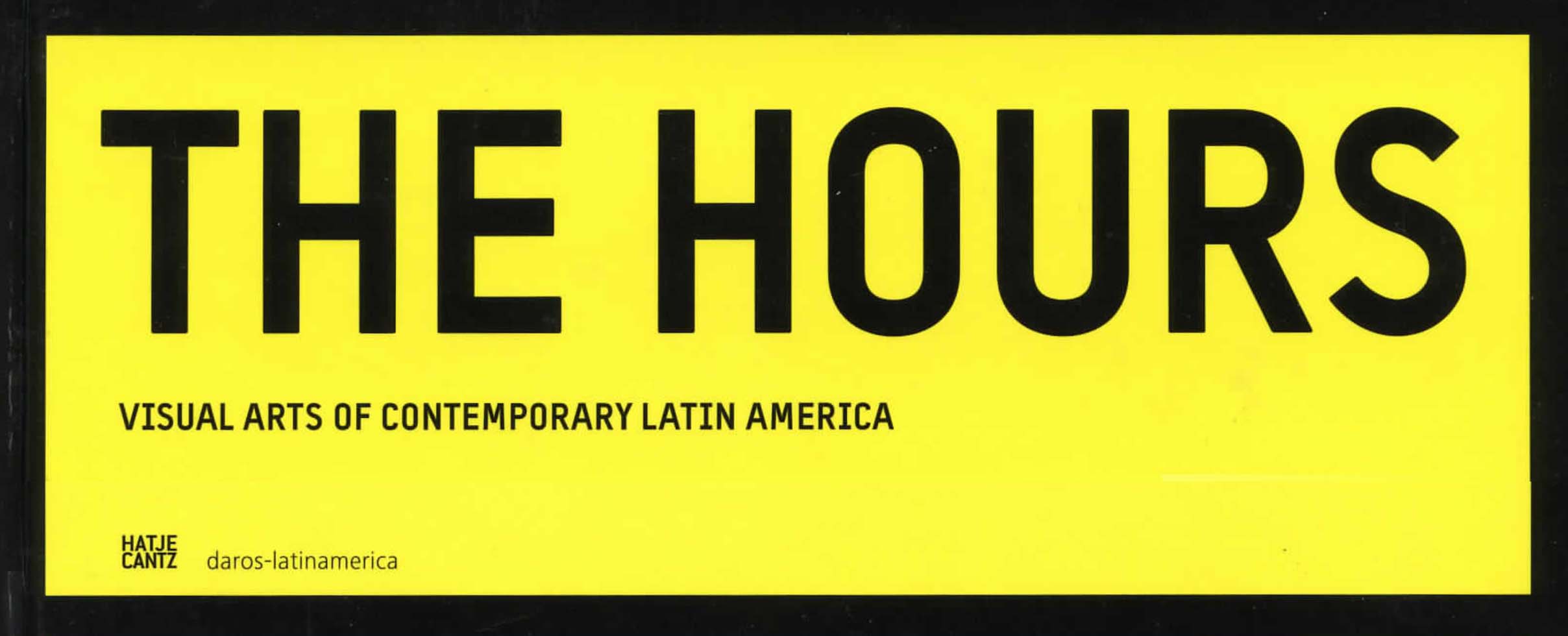Eugenio Valdés Figueroa
2005
From: Valdés, Eugenio. “Tania Bruguera,” The Hours: Visual Arts of Contemporary Latin America, Daros-Latinamerica Collection, Zurich, 2005, (illust.) p. 4:00 – 4:06.
ISBN 3-7757-1710-2
Tania Bruguera
by Eugenio Valdés Figueroa
Generally, we approach God in a search for hope. Tania Bruguera, however, does so in a search for those who are in some way culpable.
In 1998 Bruguera covered her entire body with mud and nails. Disguised as Small Island, bristling with bombastic pieces of iron, she seemed to have been imprisoned inside a “spiritual” bark. The artist stood upright and unmoving, almost inanimate, for more than half an hour at the end of one of the rooms of the Centro Wifredo Lam (La Habana). Her solemnity led the public to suppose that the performance had been reduced to that sculptural disguise that recalled the fetishes of the African animistic religions. Suddenly, the mud “statue” began to walk, at the risk of disintegrating into pieces. She crossed the gallery and headed for the street. The most surprised of those who happened to pass by and of the locals were those who identified her with the feared deity of Bantu origin who exacts payment for the “promises” that the devotees forget to fulfill.
Religious practices of that kind usually take place in the privacy of a ritual exercise, which emphasizes a direct relation between the believer and the deity. The fetish is supposed to remain in a corner of the domestic space, in a place hidden from profane eyes, and functions as the altar where the practitioner “works” together with his Nganga (fetish of Bantu origin), incorporating personal objects in it and accompanying his “requests” with prayers and specific ceremonies. Later, a burning candle, a little aguardiente, tobacco smoke and an animal sacrifice nourish the Nganga and pay for the “promise”.
During a visit to Africa, Tania Bruguera learnt that the spirit of Nkisi has the habit of going around to take revenge on the forgetful, making the pay for their lack of respect; an unpaid debt is converted into harm: “That is why”, the artist explains, “Nkisi-Nkonde is used as a mediator or moral and economic transactions; the agreements are made between the persons with the approval of Nkisi, and any breach transcend earthly debts, since it is a question of a sacred bargain, a negotiation with the soul. Nkisi does not pardon. A bargain made through Nkisi implies a mortgage on the soul…”
Nkisi-Nkonde went out to look for culprits on a journey through the city of La Habana. Nkisi went out to claim his due, and Tania Bruguera inside him, “uprooted”, in exile -or rather, in insile – which converted her into a soul and prisoner of her own soil (of her own work). The first reaction of the passers-by when they saw Nkisi roaming through the city was one of astonishment, but nobody saw a sacrilegious intention in it. On the contrary, while Tania Bruguera moved slowly forward on her journey through the streets of La Havana Vieja, the crowd that followed her kept on growing. The performance was taking on the appearance of a pilgrimage; one of the believers who joined the crowd paid reverence and picked up the nails that fell, exclaiming “This has power.”

